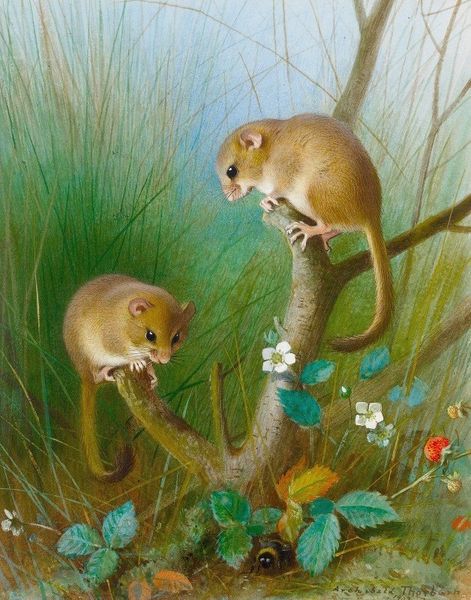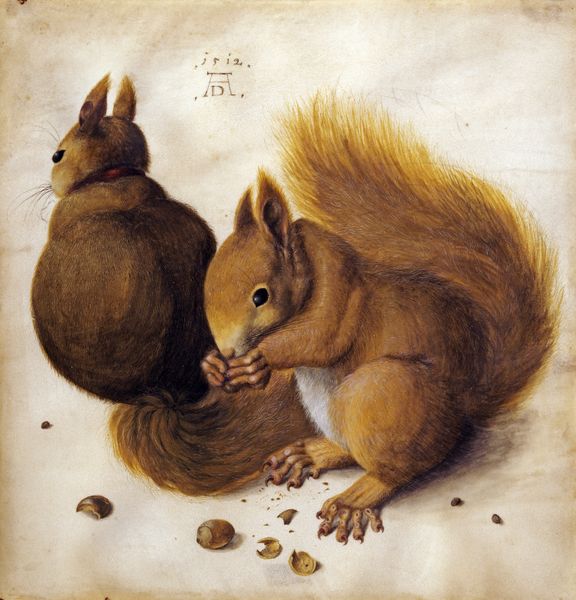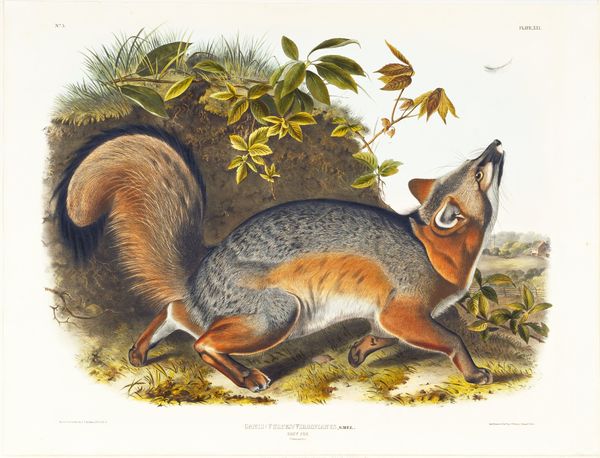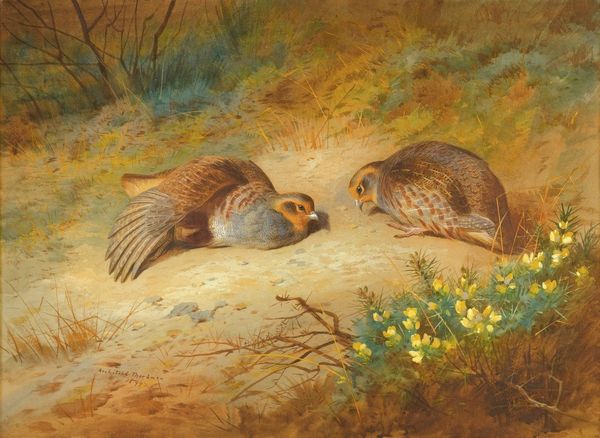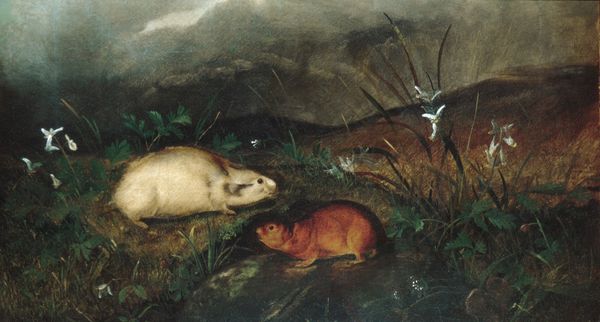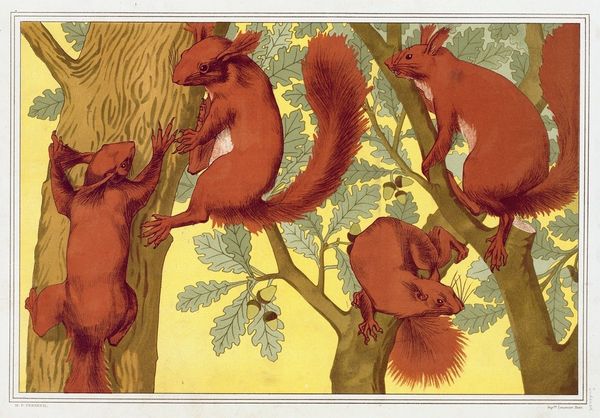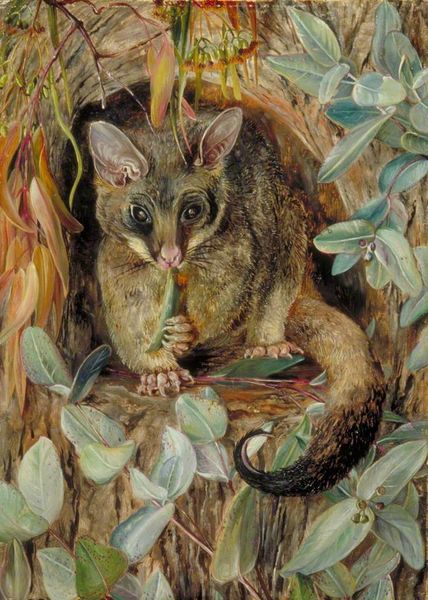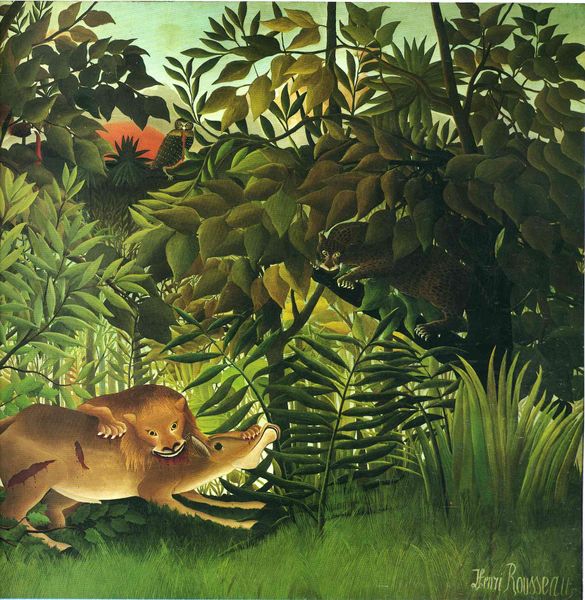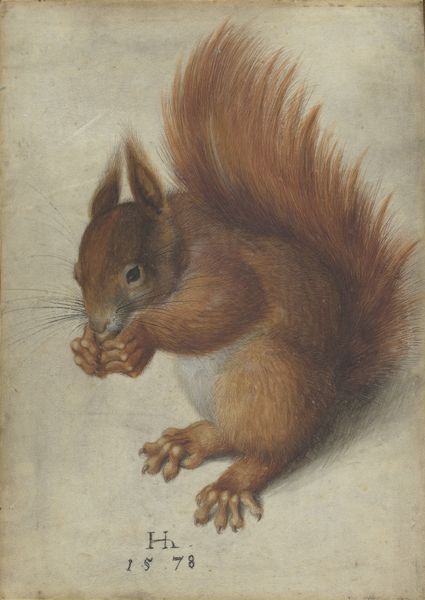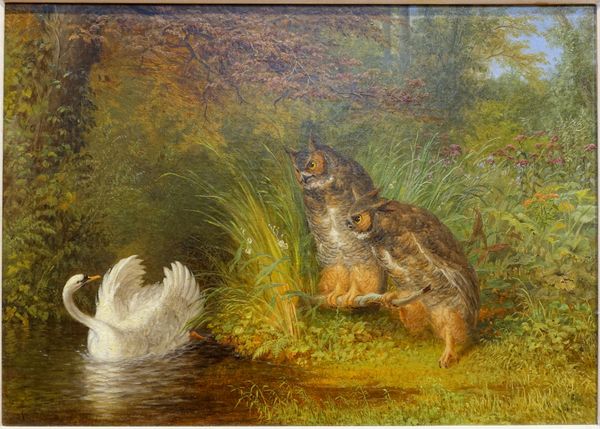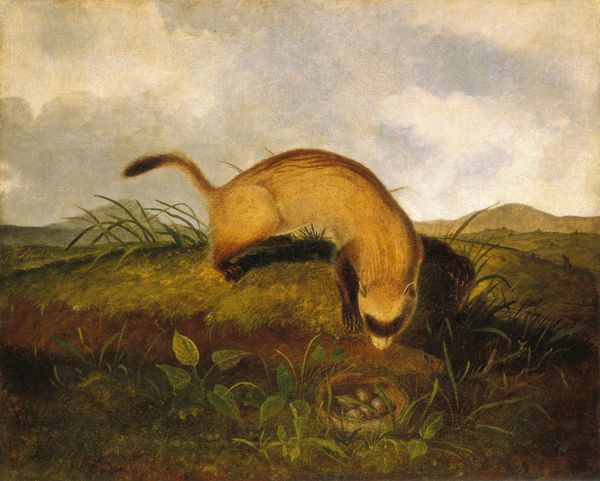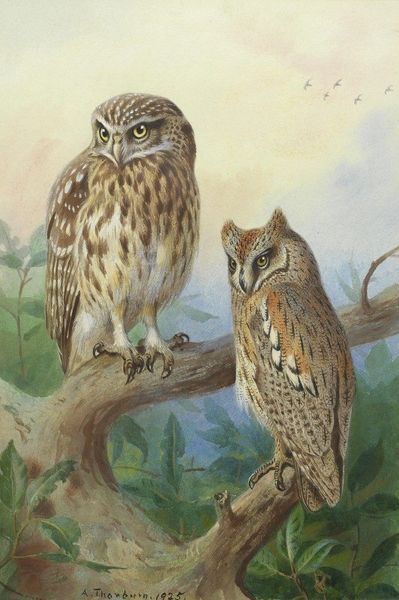
painting, watercolor
#
portrait
#
animal
#
painting
#
landscape
#
watercolor
#
animal portrait
#
watercolour illustration
#
naturalism
#
watercolor
#
realism
Dimensions: 27.3 x 19 cm
Copyright: Public domain
Curator: What a delight! Archibald Thorburn's "Dormice," created in 1919. It's watercolor, brimming with life. What catches your eye first? Editor: Honestly? That rich, rusty fur. It feels so warm, almost tangible. And their little paws, the way they grip those branches…it’s charming. A very "chocolate box" type of charming. Curator: Chocolate box, indeed. There is an undeniable sweetness to it. Thorburn had an incredible eye for detail, didn’t he? A master of naturalism, documenting British wildlife with scientific precision, yet elevating it through artistic skill. The choice of watercolor lends itself to a soft and gentle appearance too. Editor: True, the softness makes it palatable. But I wonder, looking at it now, if there is something a bit... disquieting? A kind of taxidermied feeling, almost. I mean, dormice represent hibernation, retreating, escaping… It was painted in 1919, after a period of war that radically restructured society, including decimating animal populations in some areas, for different reasons. Maybe this idyllic naturalism carries a hint of longing for a pre-war world? A world that could never truly exist again. Curator: That is a fascinating interpretation. There's a possibility that it's pure nostalgia. Thorburn, you know, he loved painting the countryside. He just adored capturing every bird and mammal he possibly could. So the nostalgia seems probable. But there is something elegiac here, I see that now. Perhaps in those attentive little eyes staring out. Almost as if these dormice know something we don't. Editor: Exactly! They are not simply cute critters posing in the foliage. This image captures an epoch, the sense of loss and a new historical dawn – not just the animals in that new world. By focusing on creatures on the fringes, so to speak, literally living within their means, the work almost unconsciously evokes what modern capitalist, imperial society forgets or suppresses: a different way of being. Curator: I see it, the fragility. Perhaps the true art lies in this intersection: objective naturalism interwoven with subconscious emotion, or quiet societal reflections of a pivotal historic period. A seemingly simple portrait becomes something so much richer. Thank you for illuminating that. Editor: My pleasure. Art is a mirror to society, intended or not. We can only perceive and analyze what it reflects back to us. And with those thoughts, let’s let those little dormice get back to their tree branch.
Comments
No comments
Be the first to comment and join the conversation on the ultimate creative platform.
